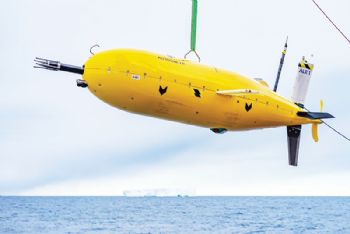
A scale model of the Autosub Long Range (ALR), known affectionately around the world as Boaty McBoatface, will take centre stage at London’s Science Museum (
www.sciencemuseum.org.uk) in an exhibition running from 12 June until October 2020.
It will be in the Water zone of the free exhibition Driverless: who’s in control?
From self-driving cars and autonomous flying drones to smart underwater vehicles like Boaty, the exhibition will explore how driverless technology is being developed and how its wider deployment could shape our habits, behaviour and society.
Boaty McBoatface was commissioned by the Natural Environment Research Council (NERC) (
www.nerc.ac.uk) to undertake scientific research, including studying the effects of climate change.
Unlike previous autonomous underwater vehicles (AUVs), which have to be recovered after a couple of days at the most, ALRs can be at sea for months, on far longer deployments than anything else currently available.
By running more slowly and efficiently than other models and using new navigational technologies, Boaty has the potential to undertake ambitious missions such as an under-ice crossing of the Arctic Ocean.
Mike Webb, head of marine research said: “NERC’s investment in marine robotics, including Boaty McBoatface — developed at the National Oceanography Centre in Southampton — is world-leading.
“NERC-funded marine robotics are already delivering new insight into some of the Earth’s most remote waters, helping oceanographers investigate the processes driving change, without the need for the constant presence of a research ship.
“The Driverless: who’s in control? exhibition at the Science Museum is a rare opportunity for the public to get up close with cutting-edge marine robotics and learn about how they could greatly advance our understanding of the oceans and climate.“